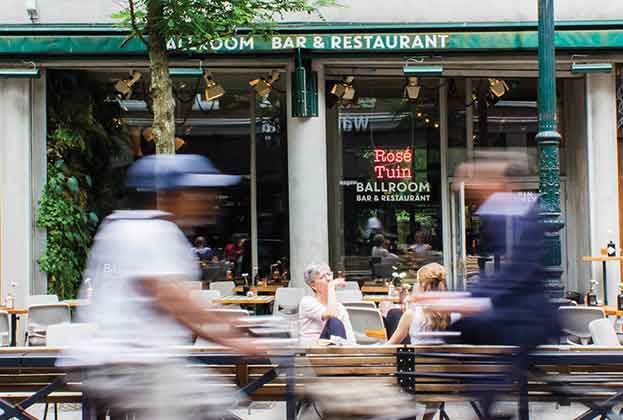The store will play an ever more important role to retailers but the opportunity will be beyond retail
Overspaced retail markets, where the growth in online penetration is forecast to be significant, are expected to be the most exposed to the shifts in consumer spending. This is already evident amongst a number of legacy retailers who are rightsizing their portfolios.
Rightsizing portfolios to become the norm
The potential need to shrink store count will differ across retailer types and geographies. However, mass and mid-market fashion is expected to see a significant degree of rightsizing due to a strong growth in online sales. For example, an estimated 28.5% of fashion sales in Western Europe will be online by 2023, an 87% growth on current levels (include clothing & footwear).
This is already playing out across retailers’ portfolios. Across the largest mass and mid-market fashion groups and brands, store portfolios in western Europe expanded by only 0.7% per annum between 2014 and 2017 with some, such as Arcadia and C&A, reducing store count by 0.6% and 1.2% per annum respectively.
Refocus on urban locations
Faster population growth in cities, particularly Europe’s core cities, will refocus occupier attention on urban locations with good public transport links. This is already leading some traditional out of town retail occupiers to devise urban concepts, alongside click & collect services. Ikea recognised the need to get closer to where their customers live, work and shop having opened their first urban concept store in Madrid in 2017.
The role of the store to become elevated
With some retailers shrinking store footprints it would be easy to assume that stores are set to become less important. Yet, the opposite is the case.
Firstly, what we are seeing with those retailers who are shrinking portfolios is a renewed focus on strategic and/or strong convenient locations with larger stores in some cases. This is apparent when we look at Zara parent Inditex whose average store size increased 11.2% between 2014 and 2017 to 624 sq m, outstripping the 1.1% growth in store count. A move to fewer larger stores in key locations by some is an acknowledgement of the role a store plays in raising brand awareness and driving sales, including those online.
A US study by ICSC in 2018 found that where a brand opened a new store there was, on average, a 37% increase in traffic to their website within the store catchment. The opposite was the case where retailers closed stores.
What is becoming clear is the need for brands to meet the customer where they are; having a physical store is one way to achieve this. Everlane’s CEO Michael Preysman reiterated this in a recent interview. Everlane , which started as an online only brand in 2011 and previously swore off physical stores, but now have four stores in the US with its CEO conceding that they needed to open stores in order to be profitable. The thinking that an online only brand is more cost effective as it avoids store costs did not stack up once the costs associated with shipping orders and acquiring customers (marketing costs) were taken into account.
Its not all about retail
Structural shifts in consumer spending may be generating occupational challenges, but it is also creating new concepts and occupiers looking for physical space in retail destinations.
Rising consumer spend on eating out and leisure has seen a growth in food and leisure operators looking to take space in retail areas. Beyond the traditional types of operators in this space, we are seeing new concepts centred around VR (virtual reality), eSports and wellness.
We are also seeing totally new retail concepts emerge, driven in a large part by changing consumer preferences and attitudes to owning stuff as well as environmental concerns. These include rental retail, online market places and wellness concepts.
Read the articles within Spotlight: The Evolution of Retail Destinations below.
.jpg)


